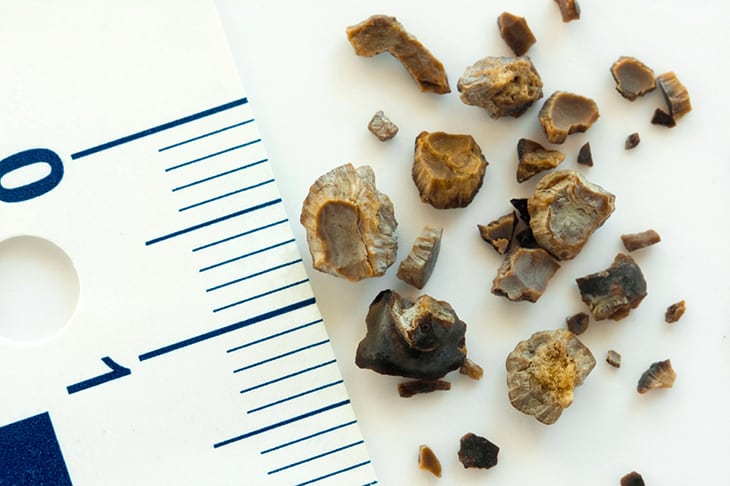
The kidneys are two bean-shaped organs found behind the gut, in what anatomists call the retroperitoneal space. They are mainly responsible for filtering the blood, removing toxins such as hydrogen, ammonium, potassium, and uric acid as the blood flows through its internal structures called glomeruli. These substances are then eliminated from the body in the form of urine.
Aside from filtering our harmful chemicals and substances from the blood, the kidneys also help the body regulate osmolality, to allow for the free movement of ions and fluids across tissue membranes to reach the blood. It also helps in controlling the volume of the different fluid compartments in the body, maintains acid-base balance, and normalizes electrolyte levels.
Because of its role in the filtration of blood, kidneys become susceptible to the formation of stones when high concentrations of minerals filtered from the blood accumulate and harden within it. These hardened stones, when allowed to stay, block and damage the nephrons which are the functional units of the kidneys. When this happens, the possibility of developing kidney disease increases, putting our health at risk.
Nephrolithiasis or kidney stone disease, remains undetected until one of these stones move and decide to travel down the narrow urinary tract. It is when this happens that symptoms occur, causing extreme discomfort in patients. These symptoms are very obvious, making the diagnosis of kidney stones relatively easier when they appear.
Here are the signs and symptoms of kidney stones that people should be aware of.
1. Bloody Urine

The symptom that often comes as shock to people with kidney stones is bloody urine. When the rough and jagged surface of a kidney stone scrapes the inner surrounding structures of the kidney and the urinary tract, damage occurs, causing blood to stain the urine. This causes a patient to pee bright red, pinkish, or brown urine, which causes alarm especially to those who experience it for the first time. This symptom is called hematuria, which, in some cases, can only be detected through a laboratory exam called a urinalysis.


